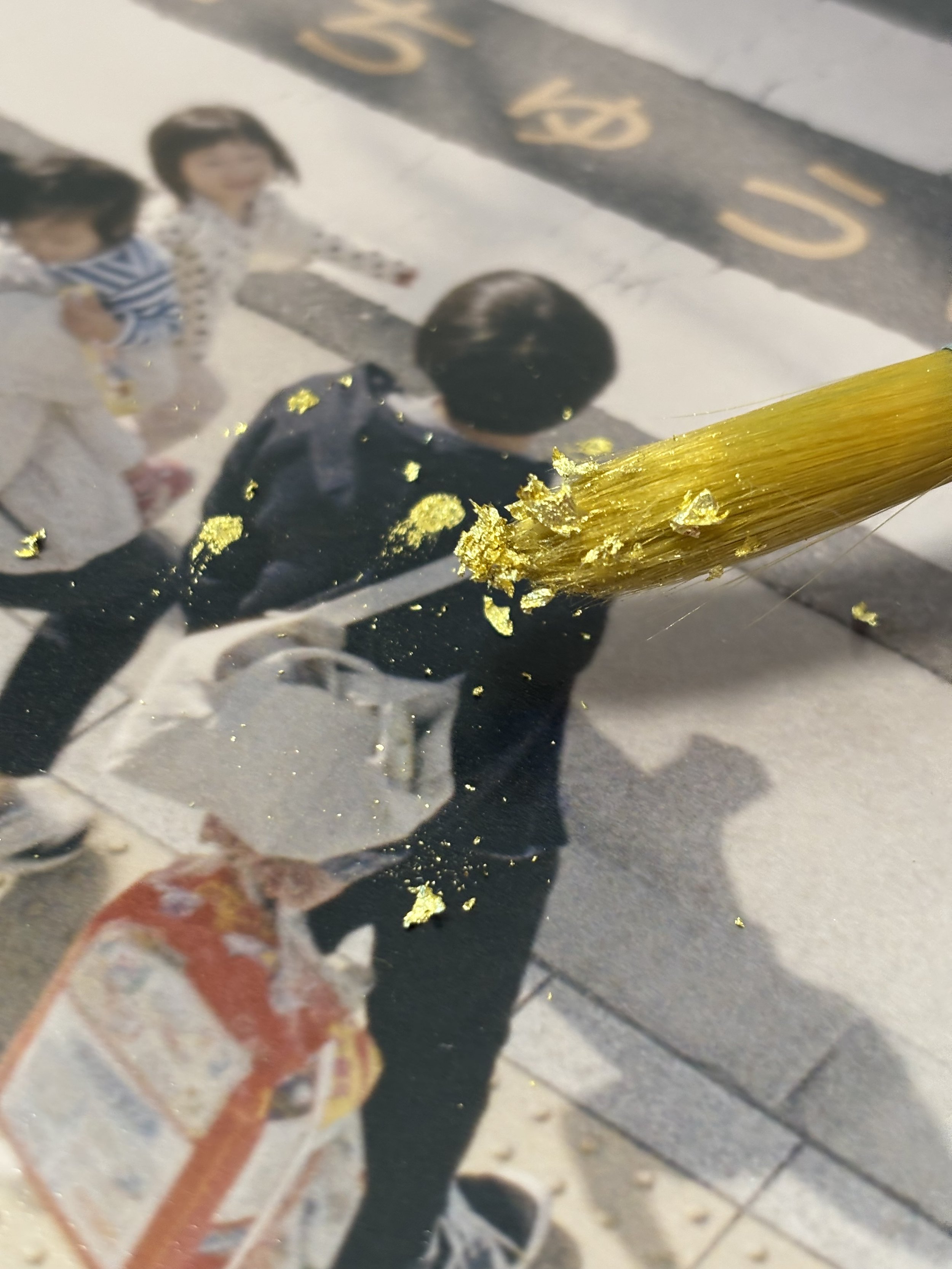About Family at Crosswalk
Family at Crosswalk (2025)
Chromogenic print with applied 24K gold
40 x 56cm floating mount
Currently being exhibited at Gallery f16
This photograph captures a family crossing the street, taken from an overhead bridge. It was shot on Kodak Portra 400 with a Leica M6, processed by a lab, and then printed by hand in my personal studio.
Working with larger print sizes presents its own challenges. The increased size and volume of chemicals makes the rotary tank harder to handle. A slight splash inside the tank can expose part of the print to the chemicals for a few seconds longer than intended. Though it’s only a brief moment those extra seconds can make a noticeable difference in the final image.
When the timer rang to signal the end of the process, I pulled the print from the tank and imperfections began to emerge—marks on the print caused by dust on the negative. These marks are even more noticeable on a print of this size. Despite my efforts to clean the negative with compressed air, I was disappointed with the result. I put the print away, frustrated, and left it untouched for months…
Over time, as I entered a new stage in life and began thinking about marriage.
I started researching engagement rings, learning about the different metals like gold, platinum, and rhodium. I began to appreciate the craftsmanship involved in creating something so personal.
This shift in perspective led me to reconsider the print, deciding instead to highlight the defects by applying gold flake, inspired by kintsugi, the Japanese art of repairing broken pottery with gold.
What was once a flawed print became something entirely new—a work that embraces both accident and intention. The gold shifts in the light, changing depending on the viewer’s angle, making the image feel alive, evolving with time and perspective. Family at Crosswalk challenges the notion of a “perfect print” and instead celebrates the beauty found in the imperfect.
Artist Statement
I strive for precision in many aspects of life, yet in my art, I am drawn to mediums that embrace imperfection.
Film photography and darkroom printing are inherently unpredictable—dust, scratches, chemical inconsistencies, and the variability of human touch all leave their mark, making each print unique. Even in ideal conditions there are variables beyond control.
In an age where digital photography offers flawless results with ease, it seems counterintuitive to choose a process so imperfect. Yet, this tension between control and chaos is what captivates me. Each photograph, and consequently each print, is a negotiation between intention and chance, precision and unpredictability. No two prints are identical, no matter how hard I try, and that uniqueness is what makes the process meaningful to me.

